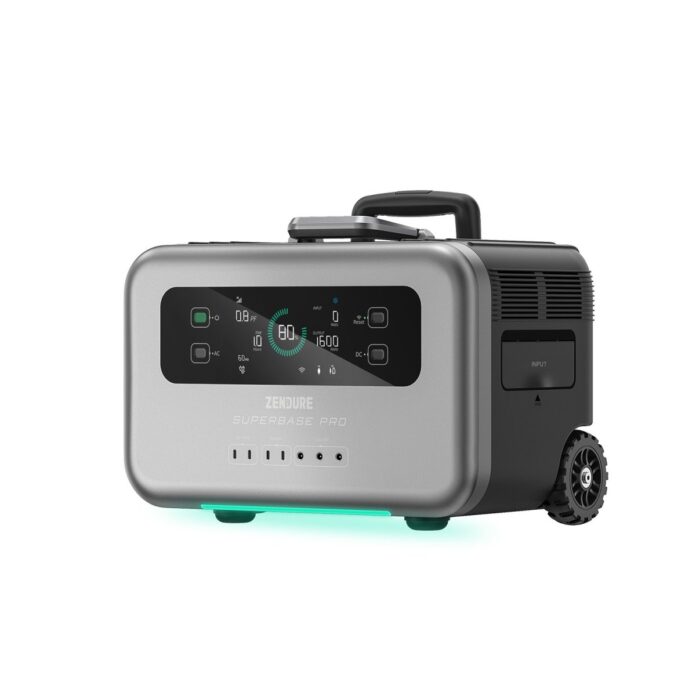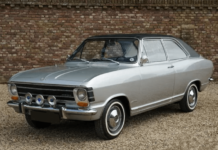[ad_1]
There has been a veritable plethora of new power stations that are for sale as the interest in them has grown rapidy over the last year. Many people want a backup for their appliances when the power goes out or they want to use them for camping or if they are living out of their vehicle. A good power station can also be used to recharge your ebike batteries while you are away from power sources. A factory built power station can keep you from needing to cobble together a battery, inverter and solar charge controller. As a professional power station cobbler I can tell you I’ve made ad-hoc power stations out of a variety of different ebike batteries and junked electric car packs and it’s not a process for the faint of heart. This article is a mildly technical article on how to correctly size your power station and how many solar panels you will need to keep the power station from draining too low. Here are the things we will be discussing:
- Figuring out your peak load
- Calculating how long your power station will last by figuring out your average load
- Figuring out what battery chemistry to use and how many charge cycles it will take
- If you need solar panels, figuring out how many you will need and their wattage

Sizing power stations can be confusing because your average consumer often gets wattage of the inverters confused with kWh. For inverters they have a wattage rating which generally (but not always) is the number of watts the inverter can put out continuously. If the inverter is not a piece of crap then the peak wattage load is often 50-75% higher than the rated wattage. For cheap Chinese inverters this is not always the case and I have gotten burned by several inverters I bought directly from China on Alibaba that could not support the peak load and often could not even put out their rated wattage.
When power stations talk about kWh or Wh they are talking about how long the power station can run with that load. If a power station is 1.5 kWh (or 1500 Wh) it can run for 1 hour at 1500 Watts of power draw (if the inverter is rated for that high of a load). If you see the number of volts or Ah discussed in the specs you should ignore them entirely and just convert them to Wh which is a better measure of power capability. Wh = Ah x nominal volts. This is one of my pet peeves that the ebike industry advertises their bikes with Ah sizing for batteries instead of Wh which is a better measure of total energy stored in the packs. It’s important to know that 1 Kilowatt hour (kWh) = 1000 Watt hours (Wh).

Calculating the peak load
To calculate your peak load you should get all the items you want to run on the same power strip and then plug that power strip into a $30 Kill A Watt meter (they are all over the internet, just google it). There are a bunch of cheaper clone alternatives, but I have used the older Kill A Watt meters for years and I have to say that they are bulletproof. Apparently the newer ones tend to melt if you leave them on loads of over 1400 Watts for extended periods so don’t do that. By watching the watts on the meter when a device first powers on you can figure out the peak load. In general the peak load for motor startup is about twice what the normal draw is. For large motors like circular saws, planers or chop saws the motor startup watts can be almost triple the continuous draw.

In my experience you need at least a 1500 Watt inverter to run a microwave and if you want to run large power tools then 3000 Watts should be your goal. You might get by with a little less, but your tools will not put out their full power. If you are just charging cellphones or laptops then a 500W inverter should work and if you want to run an ebike charger then I would go with at least a 1000W inverter even if your battery charger pulls <500 watts. I have run into issues with lower power inverters not having enough umphf to start an ebike charger charging.

Calculating the average load and figure out how long it will last
The Killawatt meters also have a kWh gauge although the cheaper ones will lose that setting and reset every time they lose power. The more expensive ones have a battery that store the kWh usage over power outages. Keep your devices plugged in and use them normally for exactly an hour. After an hour is up check out the kWh usage on the meter. This will show you how many Wh you use in an hour. Keep in mind that the power shuts off when the battery gets to 20% so you only get 80% of the rated Wh of your power station that is usable.
Once you know how many wH you are using on average you just have to multiply that by the number of hours you want to use the power station before it dies and then multiply that number by 1.2 and that gives you the size in wH you need for your power station.
Example 1 (how long will it last): If after an hour of using your computer and monitor the Wh meter shows 500 Wh that means if you get a 1.5 kWh power station it will on average run that computer for 2 hours and 24 minutes (1.5 kWh .8 = 1.2 kWh which is 2.4 hours at 500Wh/per hr).
Example 2 (what size do you need): You charge your Sur Ron battery for an hour and get 600 wH and you want to be able to run the charger for 3 hours so you need at least a 2.168 kWh power station or bigger (600 x 3 x 1.2 = 2168 wH)

Battery chemistry
There are 2 main battery chemistries that most power stations use. One is LifePo4 the other is everything else. In general LifePo4 batteries are about 20% heavier and have about twice the number of recharge cycles of other Lithium chemistries. They are also nearly impossible to explode or combust as the chemistry is much more stable than almost any other Lithium chemistry on the market. This may change in the future but that is where we are at today. The disadvantage of LifePo4 batteries is they generally (but not always) have a lower C rate than NMC and other chemistries. This means that they may charge slower or have a lower discharge rate. The manufacturer should size the charger and inverter properly with the battery so you should not have to concern yourself with these issues.

I took a 16.5 kWh NMC battery pack off a junked 2013 Volt and hooked it up in parallel to a 3000 Watt 48v inverter and it runs my wife’s off grid house for about 2 months without any sun at all. This pack weighs about 400 lbs so it is mounted behind the seats of my Tundra with ratchet straps and I keep the solar charge controller, inverter and the battery charger with it mounted on a plywood board. It cost me about $2000 to put together and honestly it’s just incredibly sketchy. My wife won’t allow me to use any chemistry other than LifePo4 with the solar system inside (we’ve already blown up 2 sets of lead acid batteries and I’ve never met anyone who has caused Lead Acid batteries to explode) so we bought a brand new 2kW LifePo4 battery with a BMS for about $1000 shipped that is still sitting in a boat anchored off LA (it’s been in transit for over 3 months now).
How much solar do you need?
Almost every power station has some kind of charge controller built in that will accept most any kind of panel. It seems like every power station seller also sells collapsible panels that are designed specifically for that unit. To be clear you should be able to use pretty much any solar panel and don’t need to buy the ones designed for that unit. To be fair there is a wide discrepancy in panel quality and a lot of the cheap stuff coming out of china is crap. I’ve bought a few cheap flexible panels and most of them don’t seem to last even a year before they self destruct. If you can get old solar panels that people decommission that is the best way to get the cheapest panels out there. Figure you lose about 0.5 % production for every year most panels are in use. It’s not a linear degradation, but that is a very close approximation.

I’ve been dealing with solar panels for over 8 years now with my wife’s house being off grid. I’ve also installed over 25kW of panels on my home which is a lot. I watch the energy generation obsessively and have been tracking it for 3 years. What I discovered is that it is rare for panels to generate their rated capacity and very common for them to generate a fraction of their total wattage capacity. My experience is that if there is no clouds in the sky and the panels are oriented toward the sun then you can get close to the rated capacity (say 80% or higher). On pretty sunny days you’ll get anywhere from 50-75% but on cloudy or overcast days you can expect to get next to nothing. If you live in a place like California or Australia where it is always sunny then solar panels will be far more effective than they will in places like Ithaca, NY where we average 30 sunny days a year (less than Seattle!) The nice thing about Power stations is they almost always have a variety of ways to be charged, you can plug them into your car system when driving and get about 120 Watts of power (more or less, depends on the power station). You can also plug them into a working AC outlet and charge them up. The amount of time it takes to charge from an outlet is the total battery capacity times .8 divided by the number of watts the power station can charge at. Most lithium batteries get slower to charge once they hit 80% so it will be longer than that, but not too much longer.
A good rule of thumb is if you think you need 100 Watts of panels to do what you need to do, you probably need twice that. At my wife’s house we run the whole off grid house with 1500 Watts of panels. This is enough for 9 months of the year, and in the winter our solar generation drops off a cliff and we generally just use the old Volt battery that is in my truck and drive it down to a power source to charge it up once a month. Don’t expect to generate much electricity during winter months if you live in a snowy overcast place like NY.

Charge it while you drive
Typically on my travel vehicles I have only 100-150 watts worth of panels, but the batteries are setup to charge from the car while it is moving. Almost every power station for sale has some kind of DC 12v charging option, but typically it is <10 amps (so it’s super slow 120Watt charging). If you are driving for long distances then you probably don’t need much for solar panels, but if you are sitting in one place for days at a time then solar panels are a must have. Don’t get roped into thinking you need to buy the panels that are designed for the power station you use. For the most part any working solar panel should work with your power station. Flexible panels tend to be less durable than fixed panels with glass on them.
Make it last
If you never charge your power station over 80% and don’t drain it below 40% then you can double the life of the battery. Pay close attention to how many power cycles the batteries will support as it varies widely with different power stations. I have seen everything from 900 cycles to 6000 cycles and it is one of the more important specs to pay attention to.
There are a ton of different power stations on the market right now, it’s outside the scope of this article to discuss them all, but here are a few of the more popular ones:

There are many others not listed here and unfortunately I haven’t tried any of them so I’m not going to try to review them here or speculate on which one is the best. I looked at the specs of most of the ones on the market and settled on getting a Zendure SuperBase Pro 1500 for a Black Friday special of $1,099. I liked that the cells were LifePo4 so my wife will let me keep it in the house and the 1 hour recharge from an outlet seems much faster than almost anything else I could find on the market. I will post an update about it here once I have had a chance to use it for a while.
Do you have a power station that you use and are you happy with it? Post your experiences below in the comments.
Ride On.
[ad_2]
Source link













